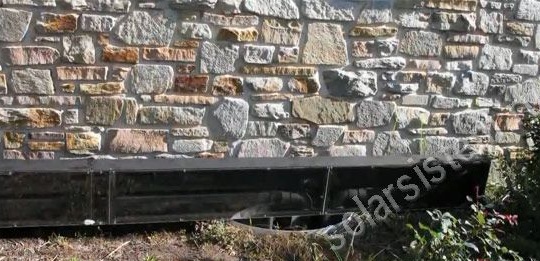
It is necessary to install an air solar collector from the south side of the house. This is its main drawback, since it is difficult to make such an air collector that would fit the exterior of the house and not spoil its outer part. This article will also describe the creation of an air solar collector so that it does not catch the eye, merges with the foundation of the house and does not spoil the facade of the building.
Materials that the author used to create a solar air collector:
1) metal drainpipes of rectangular cross section
2) boards with a thickness of 20 mm
3) moisture resistant plywood 10-16 mm thick
4) antiseptic
5) black matte heat resistant paint
Consider the main stages of creating an air solar collector and solving the problem of combining its design with the design of the house.
Primarily model This solar collector consists of drainpipes of rectangular cross section. They will fulfill the role of an absorber, although air ducts made of aluminum would be even better suited to this role, since aluminum best transfers thermal energy.
Below is a diagram of the operation of this model of an air solar collector:
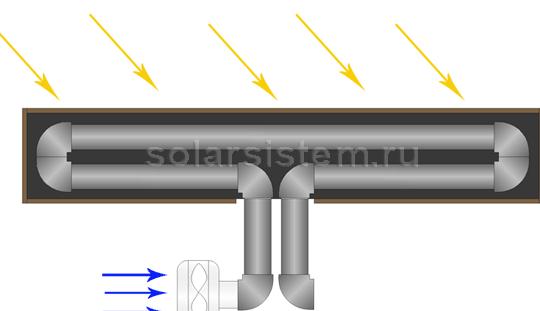
In order to prevent the air solar collector from striking the front of the building, the author decided to make it as low as possible, and in order to increase the heating area, it was decided to make the length of the collector along the length of the building. Thus, the collector will have only two rows of pipes, but will be quite long. This is important to take into account during construction, since any extensions or plantings will be able to darken the collector, and therefore significantly reduce its effectiveness. In this case, the author made an accurate calculation, so that even in winter, when the sun is low above the horizon, his solar air collector will be in the light.
You should not worry about small bushes, since most likely, when you need to heat the house, they will already drop their foliage.
Since the collector will consist of pipes that act as an absorber, they should be protected from wind and other external influences except sunlight. For this, the author decided to put them in a box. The box was assembled from moisture-proof plywood 10-16 mm thick and boards 20 mm thick. In order for this box to not deteriorate and last as long as possible, the author treated the entire wooden surface with an antiseptic and covered with a layer of paint.
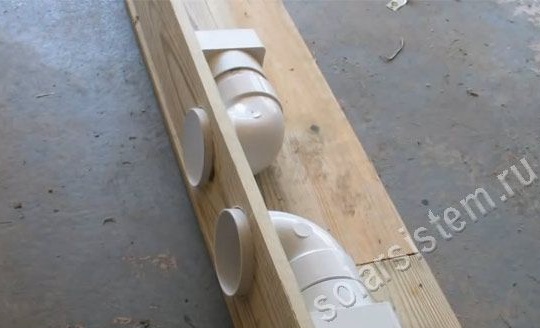
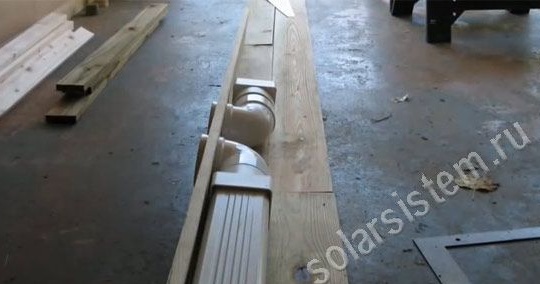
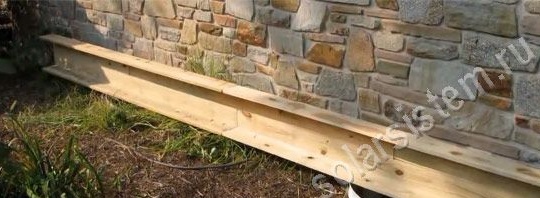
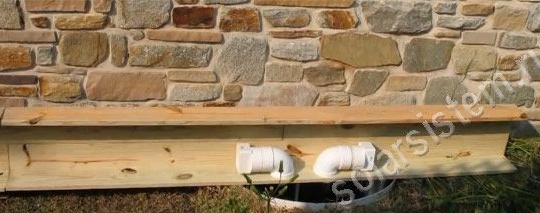
According to the planned scheme, through the transition elements at an angle of 90 degrees, the collector pipes are connected to the pipes in the basement. In order for the air heated at home not to cool on the street, the author tried to insulate the pipes.
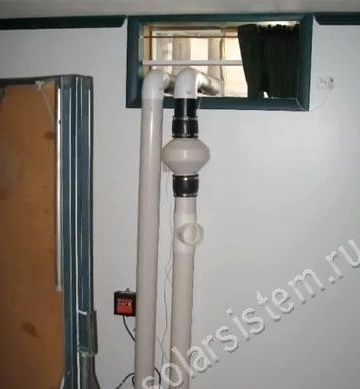
In order for hot air to circulate through the system, a duct fan was attached to the inlet pipe. Turning the fan on and off, you can regulate the movement of air masses in the solar collector system.
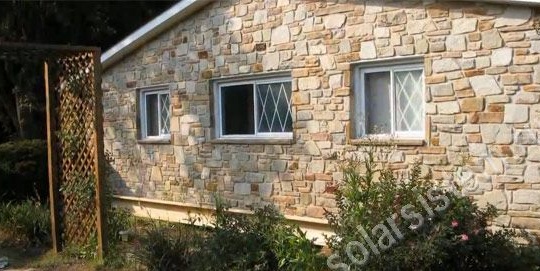
After the final assembly of the structure, the author proceeded to paint the collector. He decided to paint the inner surface of the box with black matte heat-resistant paint. The outer part of the box was also painted black, but this is not so important and you can use any color that is better suited for the design of your home.
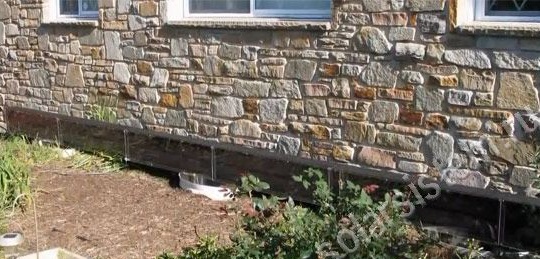
Then, glasses were put on the box with the pipes installed inside. After that, the collector will be ready for use.
The author conducted the first tests in November, when the temperature in the street was about 8 degrees. As a result, when the fan is working, 130 m3 per hour, and the intake air temperature of 15 degrees, the air temperature at the outlet of the solar collector was 42 degrees. In December, at a street temperature of 2 degrees, an intake temperature of 16 degrees, the air temperature at the outlet of the solar collector was 38 degrees.
But nevertheless, despite the seeming over-efficiency of such a system, it is not without drawbacks.
Since the air collector was initially limited by height, its area is not enough to heat a large room. Also, being close to the ground adds maintenance work to this collector. In particular, in the summer after rain, it is necessary to wipe the glass from dirt, and in winter, make sure that snowdrifts do not form that will obscure the air collector from the rays of the sun, thereby reducing its effectiveness.
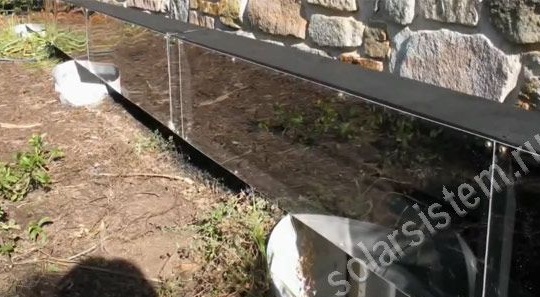
However, the author considers such shortcomings to be tolerable due to the fact that the collector does not violate the exterior design of the house, and it is great as an additional heater for the house.
